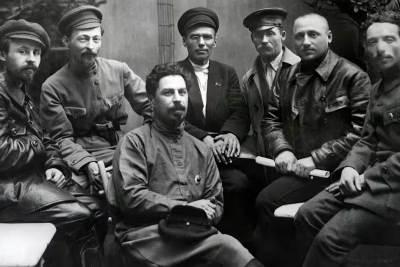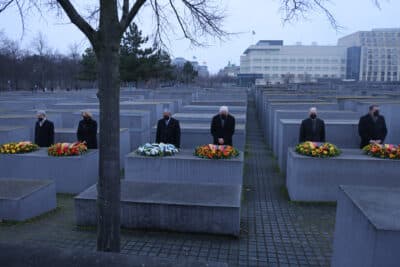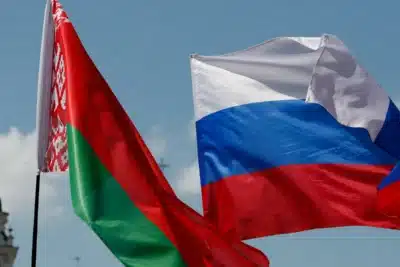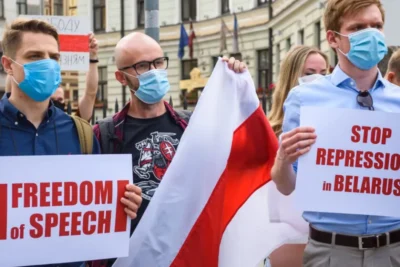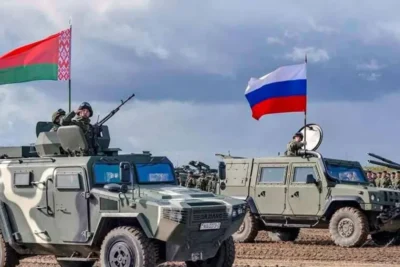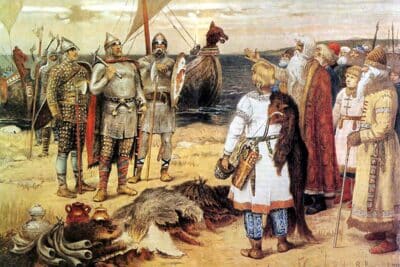
How the Lukashenko Regime Stayed in Power: 6 Tactics of Authoritarian Control

🧭 The Blueprint of a Modern Dictator
- 🧭 The Blueprint of a Modern Dictator
- 1. 📰 Total Control of Media
- 2. 🧑⚖️ Weaponised Legal System
- 3. 🕵️♂️ Surveillance and the KGB
- 4. 🗳️ Fake Elections with Real Consequences
- 5. 🧠 Psychological Control and Propaganda
- 6. 🚫 Elimination of Civil Society
- 🧩 An Authoritarian System in Full Force
- ❓ Frequently Asked Questions (FAQs)
- 📌 What are the core tactics used by the Lukashenko regime to maintain power?
- 📌 How long has Alexander Lukashenko been in power?
- 📌 Why are Belarusian elections considered fake or rigged?
- 📌 What role does propaganda play in Lukashenko's control strategy?
- 📌 Is the KGB still active in Belarus?
- 📌 How has Lukashenko silenced civil society in Belarus?
- 📌 What happened to the Belarusian opposition?
- 📌 Are there any legal protections for citizens in Belarus?
- 📌 Is Lukashenko’s power weakening?
- 📌 What can the international community do?
Few leaders in Europe have clung to power as ruthlessly and effectively as Alexander Lukashenko. Since 1994, he has ruled Belarus without interruption, becoming one of the world’s longest-standing autocrats. But how exactly has he achieved this?
This article breaks down 6 key tactics of the Lukashenko regime — methods of control that have evolved from Soviet blueprints into sophisticated tools of modern authoritarianism.
Understanding these tactics is essential to grasp the political reality in Belarus today.
1. 📰 Total Control of Media
Lukashenko has eliminated all independent national broadcasters and newspapers. The state runs:
- All TV stations, including Belarus 1 and ONT
- The national news agency Belta
- Strict censorship of online media
Journalists face arrests, beatings, and legal harassment. Words like “regime” and “dictator” are banned in coverage. Critical outlets like TUT.by and Belsat TV have been forcibly shut down. Belarus ranks near the bottom in global press freedom indexes.
🗨️ “We don’t need foreign narratives. We have our truth,” Lukashenko once said on air.
2. 🧑⚖️ Weaponised Legal System
Belarusian courts are not independent — they operate as extensions of the regime. Judges are hand-picked, and laws are custom-written to target dissent.
- Peaceful protest can bring up to 15 years in prison.
- Vague laws on “extremism” are used to criminalise media, art, or NGOs.
- Thousands have been convicted in closed trials without fair process.
🔗 Related post: Timeline of Political Repression in Belarus (2020–2025)
3. 🕵️♂️ Surveillance and the KGB
Yes, it’s still called the KGB in Belarus — a direct legacy of Soviet repression. It operates as the regime’s secret police, with unchecked power to detain, intimidate, and spy on citizens.
- Digital surveillance of messaging apps
- Use of facial recognition during protests
- Tapping phones and monitoring emails of “suspicious elements”
The KGB’s logo is often visible in propaganda — a sword and shield, symbolising control.
🔗 Related: Why Belarus Is Called “Europe’s Last Dictatorship”
4. 🗳️ Fake Elections with Real Consequences
Since 2001, no Belarusian election has been deemed free or fair by international observers.
Tactics include:
- Disqualifying opposition candidates
- Blocking independent election monitors
- Manipulating results digitally and manually
- Arresting campaign staff
In 2020, mass protests erupted after Lukashenko claimed 80% of the vote — a number widely dismissed as fictitious.
5. 🧠 Psychological Control and Propaganda
The regime crafts a narrative of:
- Stability vs chaos
- Sovereignty vs Western infiltration
- Father of the nation rhetoric
Lukashenko appears harvesting potatoes, playing hockey, or visiting factories, reinforcing the myth of a “man of the people.”
State media constantly repeats that opposition figures are foreign puppets, while exiles are demonised as “traitors.”
6. 🚫 Elimination of Civil Society
Any organisation not controlled by the regime is at risk:
- Over 500 NGOs and cultural groups have been liquidated since 2020.
- Independent unions have been dissolved.
- Charities, religious groups, and student associations are routinely banned.
Human rights organisation Viasna was declared illegal. Its founder Ales Bialiatski — later Nobel Peace Prize winner — is imprisoned.
The Lukashenko regime tactics work not because of innovation, but because of adaptation. By blending Soviet repression with modern tools of surveillance, censorship, and propaganda, the dictatorship has survived and evolved.
But cracks are visible. The younger generation, cyber activists, and exiles have challenged the monopoly on truth.
Every tactic has a counter-strategy. And every regime, eventually, breaks.
❓ Frequently Asked Questions (FAQs)
📌 What are the core tactics used by the Lukashenko regime to maintain power?
The Lukashenko regime tactics include total media control, manipulated elections, KGB-led surveillance, legal persecution of dissent, elimination of independent NGOs, and the creation of a cult of personality. Together, these tactics form a system of authoritarian governance that leaves little room for opposition.
📌 How long has Alexander Lukashenko been in power?
Alexander Lukashenko has ruled Belarus since 1994, making him the longest-serving head of state in Europe. His nearly uninterrupted three-decade rule has been maintained through undemocratic practices and state violence.
📌 Why are Belarusian elections considered fake or rigged?
Elections in Belarus are widely regarded as sham processes. The regime:
- Blocks opposition candidates from registering.
- Bans independent observers.
- Uses ballot stuffing and digital manipulation.
- Announces inflated results with no transparency.
In 2020, Lukashenko claimed 80% of the vote, sparking mass protests and global condemnation.
📌 What role does propaganda play in Lukashenko's control strategy?
Propaganda is a key tool of psychological manipulation. The state media constantly portrays Lukashenko as a strong, paternal leader who protects Belarus from external threats. Opposition figures are demonised as “foreign agents”, and dissent is equated with treason.
📌 Is the KGB still active in Belarus?
Yes. Unlike in most post-Soviet countries, Belarus retains the name and function of the KGB. It acts as the regime's secret police, engaging in:
- Surveillance of citizens.
- Harassment and torture of detainees.
- Infiltration of activist groups.
Its emblem — sword and shield — is still a symbol of fear across the country.
📌 How has Lukashenko silenced civil society in Belarus?
The regime has dismantled virtually all independent organisations:
- Over 500 NGOs have been liquidated.
- Independent trade unions and cultural associations were outlawed.
- Human rights defenders are jailed or exiled.
This tactic removes institutional support for resistance, forcing activists underground.
📌 What happened to the Belarusian opposition?
Many opposition leaders, including Sviatlana Tsikhanouskaya, were forced into exile. Others, like Maria Kalesnikava, were imprisoned after secret trials. The opposition is now mostly based abroad, organising through digital platforms and international advocacy.
📌 Are there any legal protections for citizens in Belarus?
In theory, the Belarusian constitution guarantees rights. In practice, the judiciary is controlled by the executive, and laws are routinely used to persecute political opponents. Fair trial guarantees, due process, and freedom of expression are virtually nonexistent.
📌 Is Lukashenko’s power weakening?
While Lukashenko remains firmly in control through repression, signs of vulnerability have emerged:
- Growing economic dependence on Russia.
- Youth-led digital resistance.
- Decreased public trust in elections and institutions.
Nonetheless, cracking the regime requires both internal and international pressure.
📌 What can the international community do?
- Keep the human rights crisis in Belarus on the global agenda.
- Support Belarusian civil society and independent media.
- Maintain targeted sanctions on regime officials.
- Offer asylum and platforms to exiled opposition figures.

